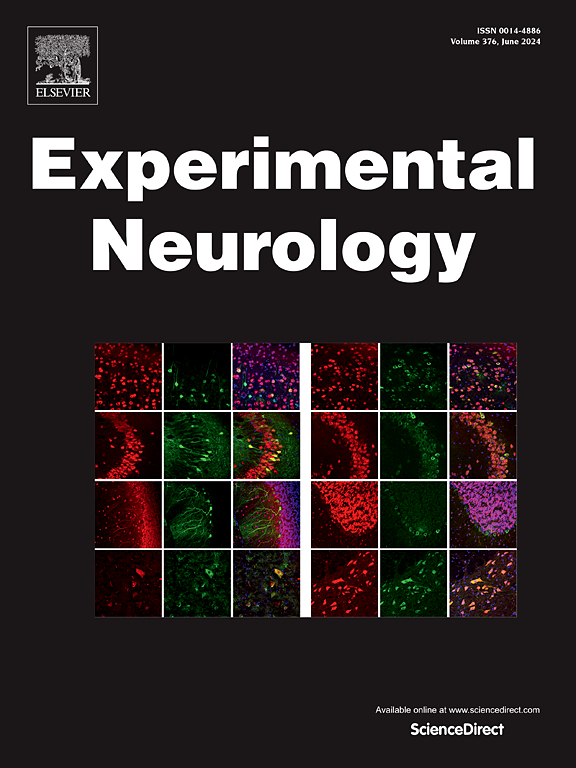Edaravone ameliorates inflammation in ischemic stroke mouse by regulating the CYP1A1 pathway through gut microbiota
IF 4.6
2区 医学
Q1 NEUROSCIENCES
引用次数: 0
Abstract
Inflammation is one of the main contributors to post-stroke injuries, and the disorders of the gut-brain axis post-stroke can further induce inflammation. Edaravone (3-methyl-1-phenyl-2-pyrazolin-5-one, EDA) is widely utilized neuroprotective medication for ischemic stroke in Japan, China, India, and other countries. However, the effects of EDA on peripheral inflammation and gut-brain axis repair post-stroke have not been revealed yet. In this study, we employed network pharmacology to identify the potential anti-inflammatory targets and signaling pathways that EDA may influence in the treatment of ischemic stroke. Then, we used 16S rDNA sequencing and molecular docking techniques to determine whether the anti-inflammatory effects of EDA are dependent on the gut-brain axis. Using morphological and molecular biology methods, we investigate how EDA reduces inflammatory response after ischemic stroke through gut microbiota and its metabolites. We demonstrated that EDA alleviated central and peripheral inflammation and rescued gut microbiota dysbiosis post-stroke. Meanwhile, EDA also improved intestinal histological features and decreased intestinal inflammation of post-stroke. The network pharmacology, 16S rDNA sequencing, and molecular docking results revealed that EDA could bind with the ESR1 and thereby regulate the expression of CYP1A1. Furthermore, EDA regulated CYP1A1-related metabolism and decreased the level of 20-HETE post-stroke through gut microbiota. Our study confirmed that EDA alleviated central and peripheral inflammation post-stroke by inhibiting CYP1A1 and CYP1A1-related metabolic through gut microbiota. CYP1A1 was a candidate target for treating ischemic stroke.

依达拉奉通过肠道菌群调节CYP1A1通路改善缺血性脑卒中小鼠炎症
炎症是卒中后损伤的主要原因之一,卒中后肠脑轴的紊乱可进一步诱发炎症。依达拉奉(Edaravone, 3-methyl-1-phenyl-2-pyrazolin-5-one, EDA)是日本、中国、印度等国家广泛应用于缺血性脑卒中的神经保护药物。然而,EDA对中风后外周炎症和肠-脑轴修复的影响尚不清楚。在本研究中,我们采用网络药理学方法来确定EDA在缺血性脑卒中治疗中可能影响的潜在抗炎靶点和信号通路。然后,我们使用16S rDNA测序和分子对接技术来确定EDA的抗炎作用是否依赖于肠脑轴。利用形态学和分子生物学方法,我们研究了EDA如何通过肠道微生物群及其代谢物减少缺血性中风后的炎症反应。我们证明EDA减轻了中枢性和外周性炎症,并挽救了中风后肠道微生物群失调。同时,EDA还能改善脑卒中后肠道组织学特征,减轻肠道炎症。网络药理学、16S rDNA测序及分子对接结果显示EDA可与ESR1结合,从而调控CYP1A1的表达。此外,EDA通过肠道菌群调节cyp1a1相关代谢,降低脑卒中后20-HETE水平。我们的研究证实,EDA通过抑制CYP1A1和CYP1A1相关的肠道菌群代谢,减轻脑卒中后中枢性和外周性炎症。CYP1A1是治疗缺血性卒中的候选靶点。
本文章由计算机程序翻译,如有差异,请以英文原文为准。
求助全文
约1分钟内获得全文
求助全文
来源期刊

Experimental Neurology
医学-神经科学
CiteScore
10.10
自引率
3.80%
发文量
258
审稿时长
42 days
期刊介绍:
Experimental Neurology, a Journal of Neuroscience Research, publishes original research in neuroscience with a particular emphasis on novel findings in neural development, regeneration, plasticity and transplantation. The journal has focused on research concerning basic mechanisms underlying neurological disorders.
 求助内容:
求助内容: 应助结果提醒方式:
应助结果提醒方式:


